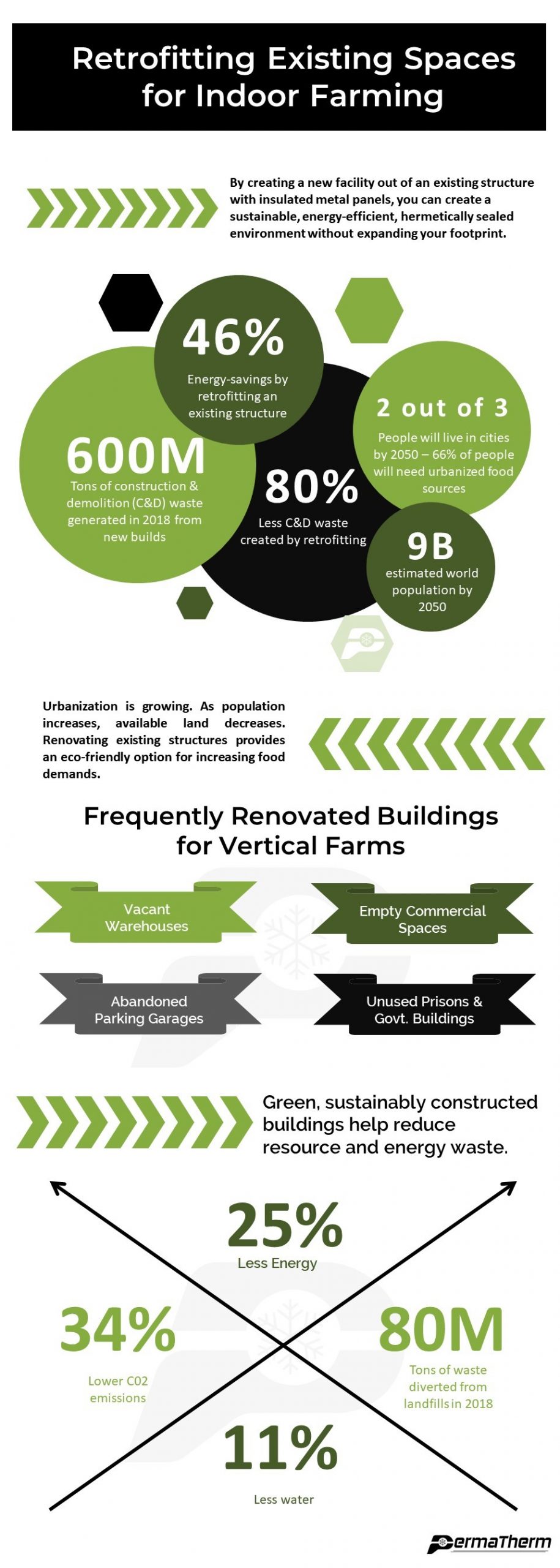Indoor farming has become an essential part of food production and distribution. A study by the USDA estimated that by 2050, the world population will reach over 9 billion – with 2 out of every 3 people living in urbanized areas. While the Earth’s population is rapidly expanding, greenspaces are sacrificed to new construction projects.
Indoor farming offers a solution for the ever-increasing food demands of the human race while maintaining a smaller ecological footprint. Choosing to grow indoors offers cultivators the ability to produce food in a more sustainable way. Choosing to renovate and retrofit existing buildings versus tearing up new land is the very definition of being socially responsible. As architect Carl Elefante said, “The greenest building is the one that is already built.”

Renovating an Existing Building for Indoor Farming
By choosing to renovate an existing building with insulated metal panels for an indoor farming project, you can decrease construction and development waste, decrease energy consumption, and improve the conservation of farmland.
In 2018, the EPA estimated that over 600 million tons of construction and demolition waste were generated from new project builds. Retrofit and renovation projects, however, reduce waste by 80-90%. Additionally, a study by the US Green Building Council completed in 2018, revealed that green, sustainably constructed buildings used 25% less energy, 11% less water, produced 34% less CO2 emissions, and diverted over 80 million tons of waste from landfills.
Take the time to explore the option of renovating and retrofitting an existing structure using insulated metal panels before beginning your next indoor farming project. By lining an existing facility with insulated panels, your vertical farming project can drastically save on expenses, waste, and resources.

Recent Comments